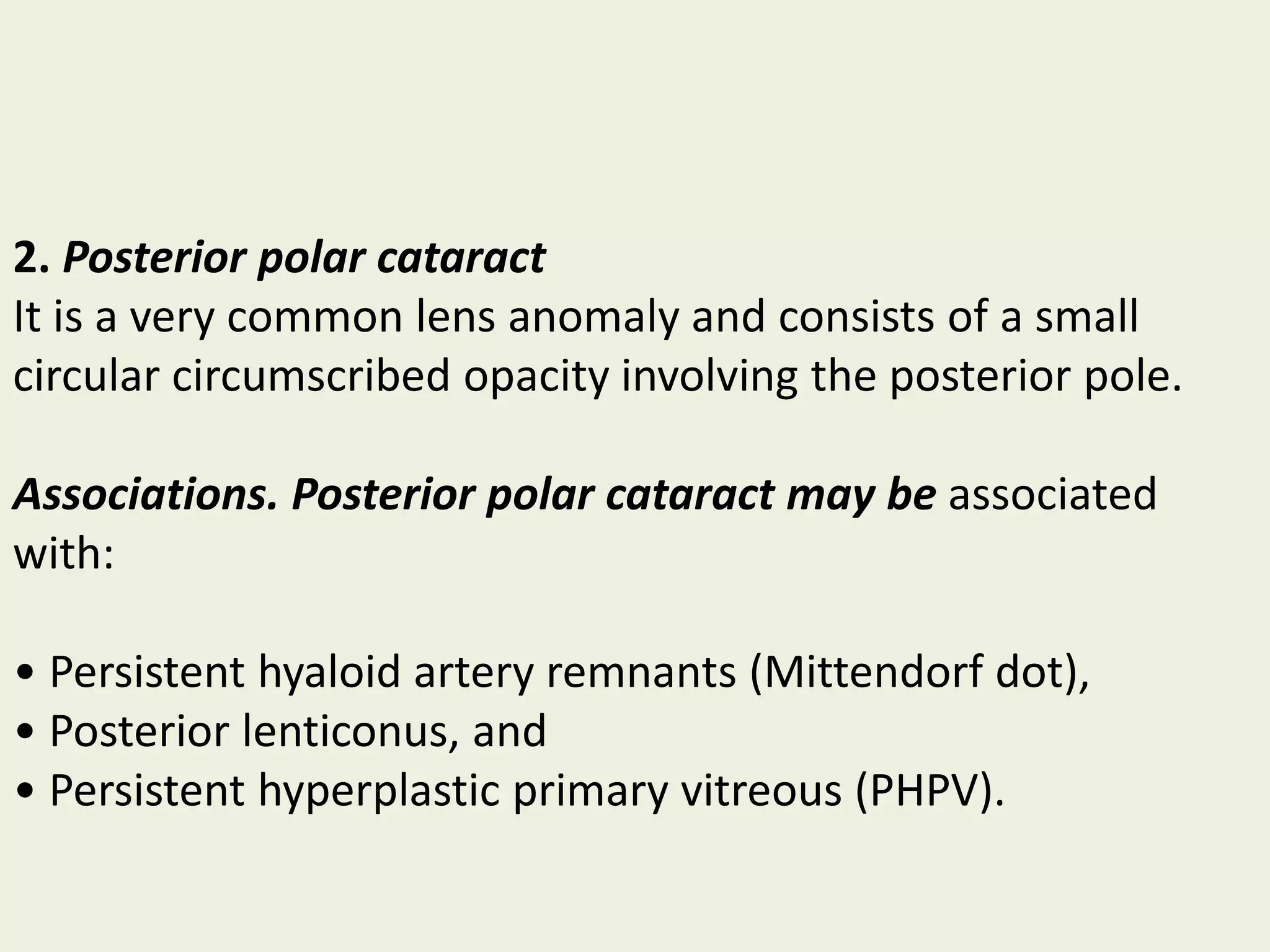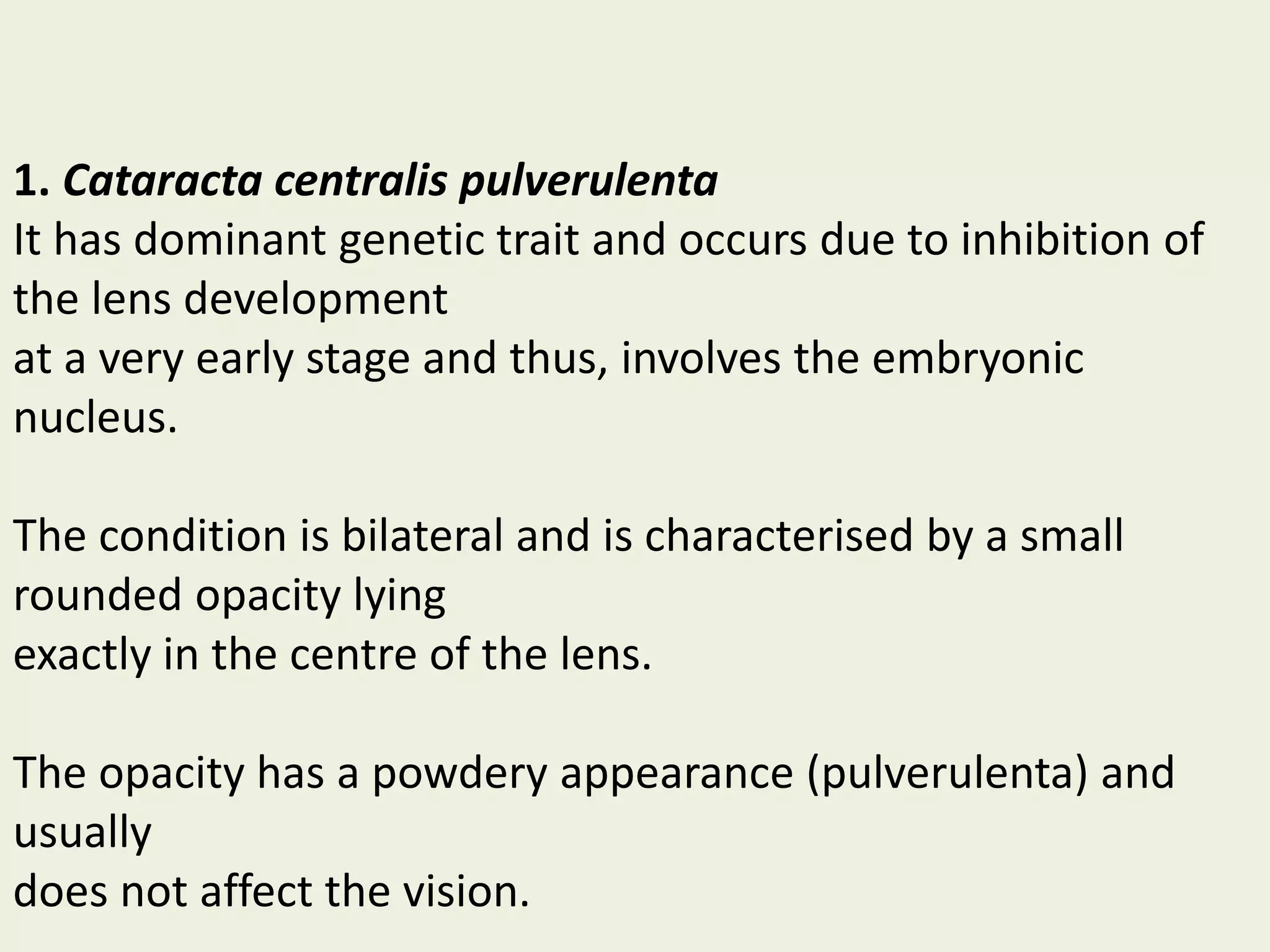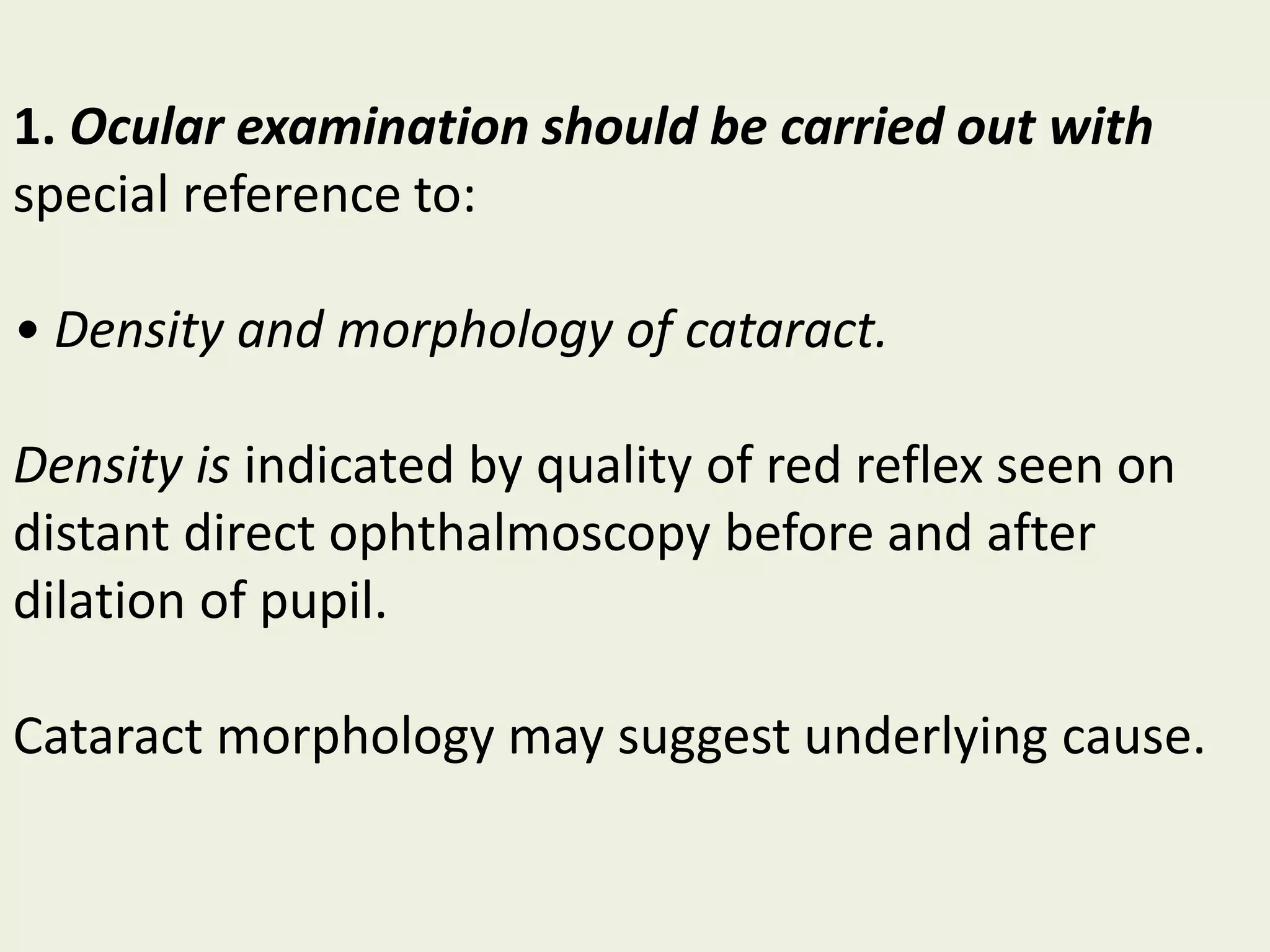This document discusses congenital and developmental cataracts. It describes the different types of cataracts including polar, nuclear, lamellar, and total cataracts. Causes are discussed such as hereditary factors, maternal infections like rubella, and metabolic disorders. Clinical features and management approaches are outlined including early surgery to prevent amblyopia, techniques like extracapsular cataract extraction, and correction of aphakia with lenses or contact lenses depending on age.
















































